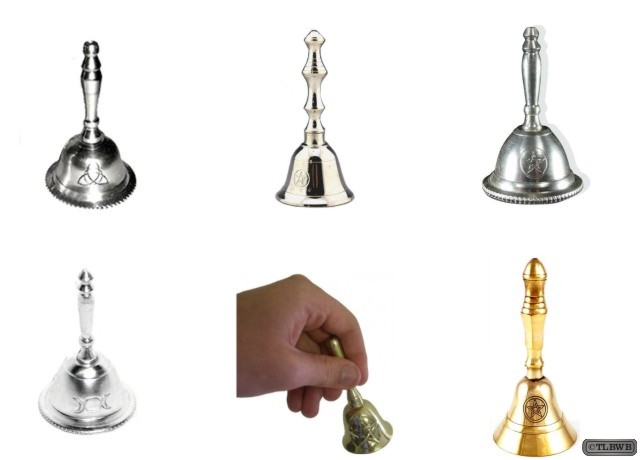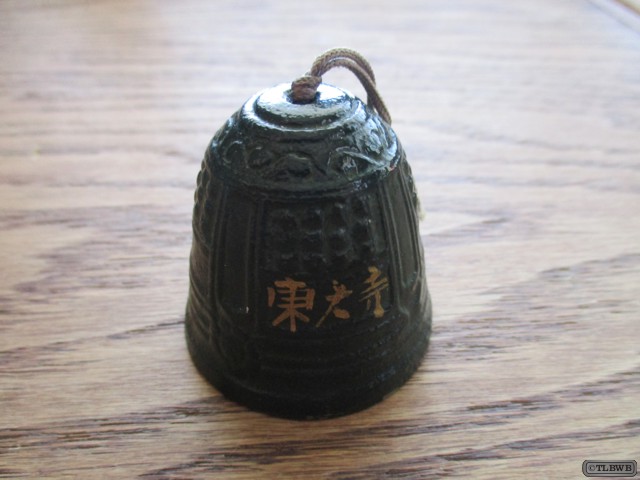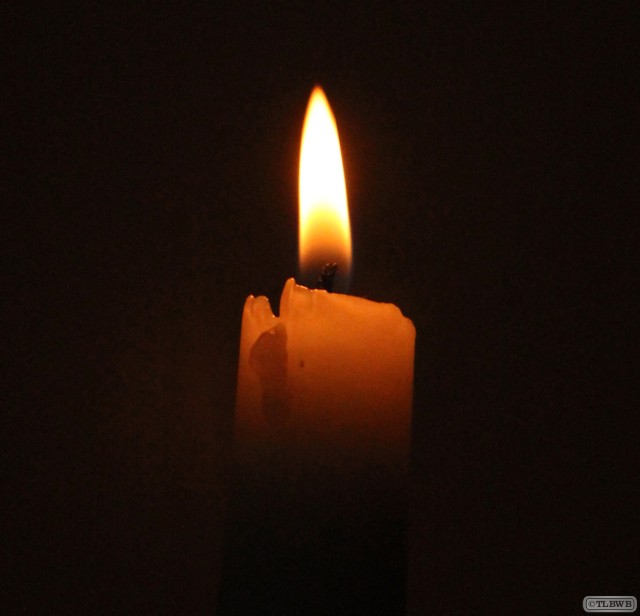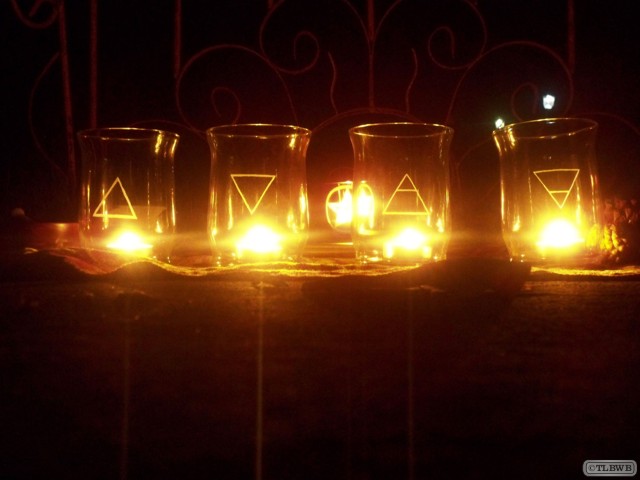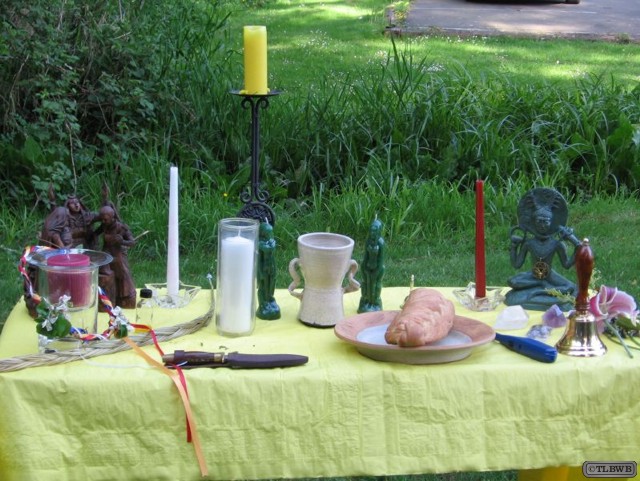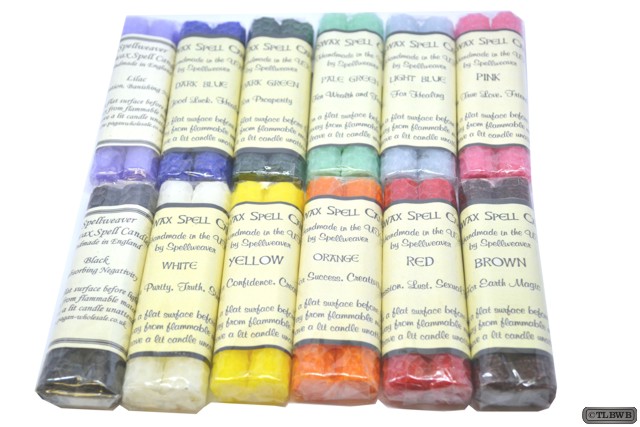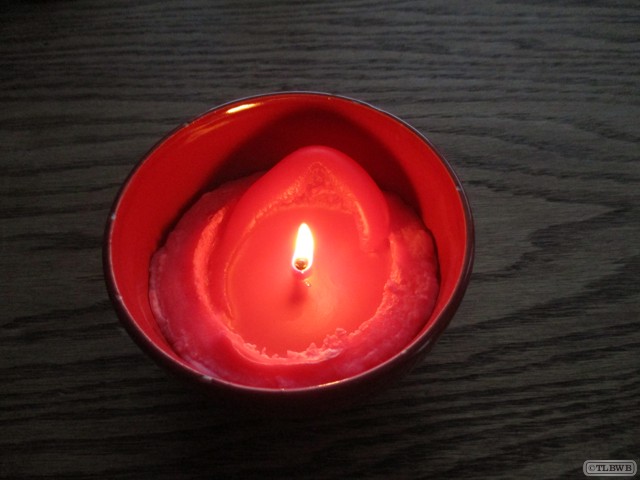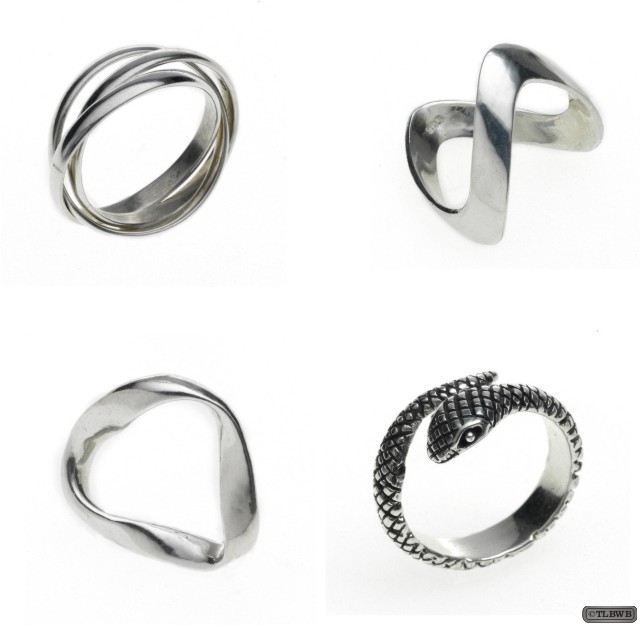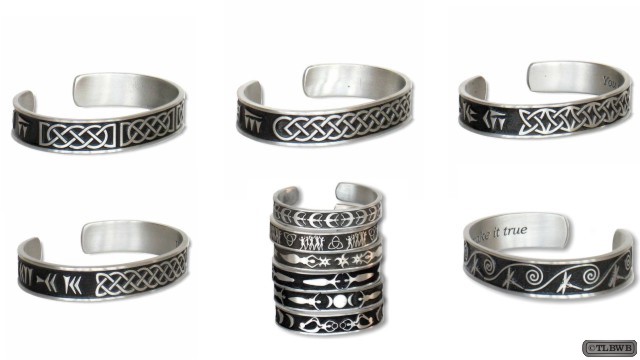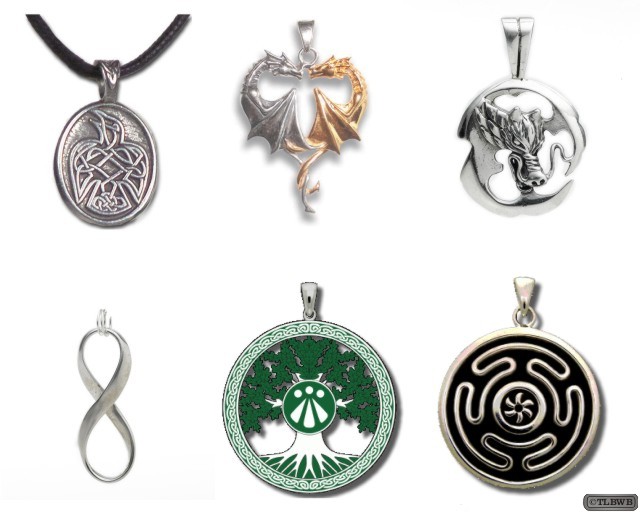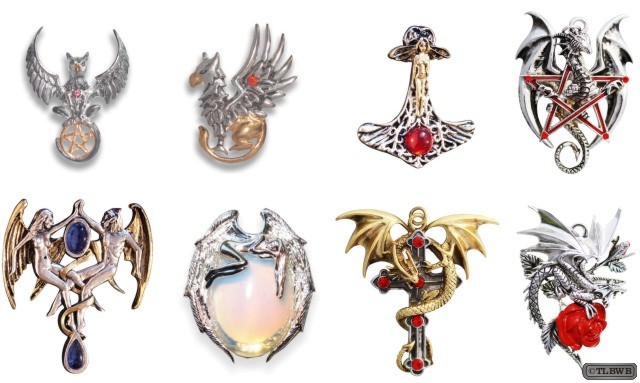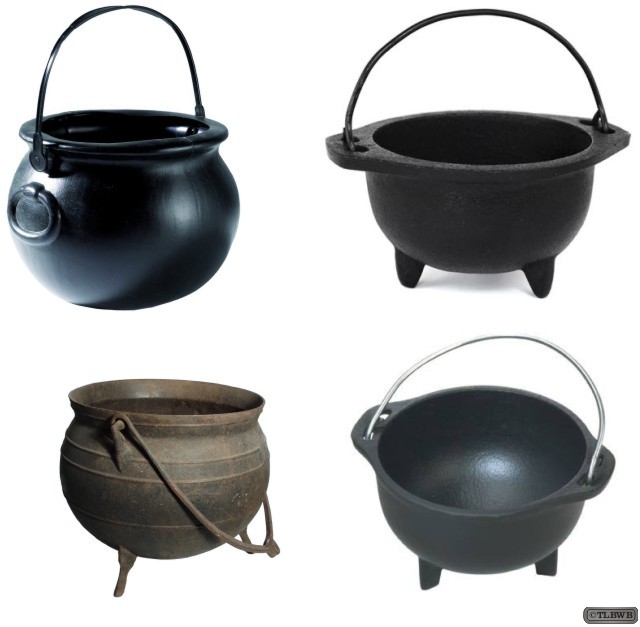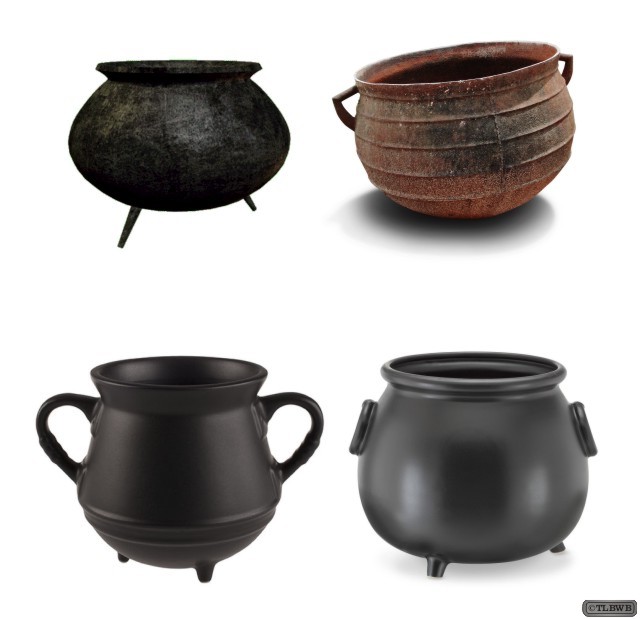Bells are like the Voice of the Goddess. When you ring one, it brings the Divine’s attention to you. And your attention to the Divine!
A bell with a lovely tone will call beautiful, healing energy to you. Bells can also be used to clear energy. At the end of a ritual is a good time for this, but if unwanted energy crops up during a ritual, you can use the bell to disperse it.
Hundreds of years ago, rural folks knew that loud noise drove away evil spirits, and the bell is a prime example of a good noisemaker. The ringing of a bell causes vibrations which are the source of great power. Variations on the bell include the shaking of a sistrum, a ritual rattle, or the use of a singing bowl. All of these can help bring harmony to a magical circle. In some forms of Wicca, the bell is rung to begin or end a rite, or to evoke the Goddess.
The Bell
When setting up your alter, some of you may notice a bell included among things you should have. You may also see it called for in some rituals or spells that you may work with. You may also see it used as a symbol for Wicca. So where did this tradition come from, what does it mean, and why do we use it still today?
In ancient times the bell was believed to rid an area of negative entaties or energies. This can still be a purpose for it today. I have seen cleansing rituals that still involve using a bell to drive away spirits. In ancient times they use to hang the bells on doors and leave them strategically placed around the house to help keep away negative spirits and energy. This is a practice that you will still see used in households today.
When a bell is cleansed and consecrated to be used as a magickal tool, it is believed that it can help to purify everyone that is present when it rings. For this reason, you will often see it used today at the beginning or ending of rituals that we do. Before beginning any magickal working you can ring the bell to rid any negative energies, and call the attention of the spirits you wish to summon in your workings.
The vibration of the bell can help to stimulate the energy in your environment. It also helps to set your intention and inform your subconscious of the actions you wish to take. For those of you who may have a harder time with meditation the ringing of a bell can make entering meditation easier.
The bell traditionally is symbolic of the Great Goddess. The bell can be used during ritual to help invoke the Goddess. You may also see it used at each of the four quarters when calling quarters during ritual. If you choose to place a bell on your altar most traditions agree that it should be located on the left of your altar. The bell corresponds to the element water, and is a feminine energy. While you will not see it used by all witches or Wiccans, the bell is a tool that can be given importance in your magickal workings if you so choose and treat it as a magickal tool.
The Lost Bearded White Brother
Celebrating the Litha – Summer Solstice
Participants
High Priest
High Priestess
Material Needed
Traditional Foods: Garden fresh fruits and vegetables are made into a variety of dishes and eaten by Pagan’s who choose to celebrate this day.
Herbs and Flowers: Mugwort, Vervain, Chamomile, Rose, Honeysuckle, Lily, Oak, Lavender, Ivy, Yarrow, Fern, Elder, Wild Thyme, Daisy, Carnation.
Honey: Our lovely bees are now making honey. Midsummer full moon is known as the ‘Honey Moon’ for the mead made from honey now available. This is often part of handfastings performed at the Summer Solstice. Mead is regarded as the divine solar drink, with magical and life-restoring properties. Drink to celebrate and toast the life-giving abundance of the Sun.
Incense: Lemon, Myrrh, Pine, Rose, Wisteria.
Woods Burned: Oak.
Sacred Gemstone: Emerald.
Before The Ceremony
High Priest
Clean the tools and ingredients with Copal-Cinnamon incense.
Statement Of Intent
High Priest
The Goddess at Litha
At the Summer Solstice, the Goddess is the Generous Mother, Freya, Flora, Habondia, she who gives life and fruitfulness to all her children. Everything in nature is generous – otherwise we could not live. The apple tree makes hundreds of apples every year, when only one seed in one apple would be enough to reproduce the tree. Bees make honey so that the hive can survive the winter, but they keep on working all summer long, storing enough to share. Life could exist without climbing roses, striped butterflies, songbirds, raspberries, or wildflowers, but the Goddess keeps making new forms of beauty for us to enjoy.
The Goddess at Summer Solstice gives us not just what we need, but extra. We can feel close to her by being generous, giving more than were asked to give, and doing more than just our fair share. That way, we make abundance for all.
The rose is the Goddess symbol at this time of year. Roses bloom abundantly in June, and we can take joy in their sweet scent and the lovely colors of their petals.
Opening Of Circle
Together
(Walking clockwise from East)
By the air that is her breath
By the fire that is her bright spirit
By the living waters of her womb
And by the earth that is her body
The circle is cast,
(Tie the knot of the circle)
So Mote It Be!
Invoking The Watchtowers
Together
East (Air)
Hail to thee Guardians of the Watchtowers of the East,
The powers of air.
We welcome you all to our circle today.
So Mote It Be!
South (Fire)
Hail to thee Guardians of the Watchtowers of the South,
The powers of fire.
We welcome you all to our circle today.
So Mote It Be!
West (Water)
Hail to thee Guardians of the Watchtowers of the West,
The powers of water.
We welcome you all to our circle today.
So Mote It Be!
North (Earth)
Hail to thee Guardians of the Watchtowers of the North,
The powers of earth.
We welcome you all to our circle today.
So Mote It Be!
Invoke The God And Goddess
High Priest
I now do call the Eternal God to our circle today, send thy Spirit forth! Pierce our Sacred Circle with thy vibrant presence. Flow through our bodies this day. Blessed be the Eternal God.
High Priestess
I call the Eternal Goddess to our circle today, send thy Spirit forth! Pierce our Sacred Circle with thy vibrant presence. Flow through our bodies this day. Blessed be the Eternal Goddess.
High Priest
The Circle is cast; we are between the worlds. In this place that is not a place, in this time that is not a time, with a willing suspension of disbelief, we consider the possible, explore the probable, and question the truth.
So mote it be!
Together
May the place of this rite be consecrated before the gods. Eternal Gods and Goddesses of Nature are with us.
Blessed Be!
High Priestess
Be with us here, O beings of the Air may your warmth bring us love and success!
(High priestess lights incense)
High Priest
Be with us here, O beings of the Fire may your presence give us the strength so that our future is bright!
(High priest consecrates and lights the large candle)
High Priestess
Be with us here, O beings of the Water may your presence enlighten us with your wisdom!
(All drink sherry from the glass)
High Priest
Be with us here, O beings of the Earth may your presence bring us joy that will be long lasting!
(High priest scatters salt on altar)
Ceremony Begins
High Priestess
All through the first half of the year, since his birth at the Winter Solstice, the God has been growing into this life in the visible, tangible world. Now, at the Summer Solstice, he transforms. The daylight is longest and strongest at this time, but now the power of night must begin to grow again. Everything and everyone who fulfills their purpose must change. The God dies in this world in order to be born into the Otherworld. Before, he was awake in this world and asleep in the Dreamworld. Now he becomes the Dreamer, asleep in this world but awake in the world of dreams and visions, the seed of what will come to be in this world. He becomes the Messenger, carrying our hopes and prayers to the spirit realms.
Blessed Be!
High Priest
Behold the God and Goddess, Lord of the Forest and his Bride, once again the Earth is blessed by their presence.
So mote it be!
High Priestess
This is the time of purification, and a renewing of life. This is the time of the quickening. At this time and in this place between the worlds, I come into the presence of the Lord and the Lady that I may gain wise and truthful counsel.
Blessed Be!
Together
Every beginning has an ending, and every ending is a new beginning. In Life is Death, and in Death is Life. Watch over us, loved ones, and all of our Brothers and Sisters, here and departed, who, tonight are joined together again for fellowship and celebration. Bless us all as we light our bonfires, our hearth fires, and the eternal fires in our hearts. Guide us and protect us, tonight and throughout the coming year.
Blessed Be! Blessed Be!
High Priest
Places a pinch of salt on each member’s tongue. My body is salt, taste the breath of death.
High Priestess
You are entering a space of perfect freedom as each visualizes their hopes for their life to come with the coming of the Sun, places a drop of honey on each member’s tongue. Taste the sweetness of life.
Together
Looking at the candle I who have died am alive again today, and this is the sun’s birthday! (repeat)
This is the birthday of life and love and wings, and the great joyous happening inimitably earth. We are born again, we shall live again! (repeat).
The Sun Child, the Winterborn King!
High Priest
Lord, You who is the freedom of the wild things, the bright sun that lights the day, the mystery of the forest, he resolve in the heart of humanity, we welcome you in our midst for you are the body of nature who gives life to the universe. We thank thee for all the good and the bad that happened to us in the past year. The good as it makes our lives happier. The bad as it makes our souls stronger and strengthen our resolve to do better.
So mote it be!
Together
So mote it be!
High Priestess
The old solar year has run its course and completed its cycle. So has some of our habits or traits completed their cycles and outlived their usefulness. This is a time for shedding that which is no longer needed. Take a few moments now to consider which things you would leave behind as you go into the coming year.
So blessed be!
(Pause)
As the old year dies away so to will these old ways will fade into memory.
So mote it be!
Together
So mote it be!
Together
(Consecrates the assorted small candles with oil and then light them)
Water, Air, Fire, Earth
We celebrate the Sun’s rebirth
On this dark and longest night
We burn the sacred candles bright
We thank thee for the light of the sun
Hail to thee, O Great Horned One
So mote it be!
Spellwork
(Spellwork & Magic are anything but supernatural for most Wiccans and Pagans. Learn about magical theory, how energy is manipulated, choosing your magical name, herb and candle magic, and protection rituals. Also covered: should you pay someone else to cast a spell for you?)
(This is a Midsummer Charm to help bring abundance to your kitchen, joyous celebration, bonfire, barbeque and feel free to include dancing, clapping and music)
Conclusion
High Priest
May the rest of this year bring us happiness! We shall never forget the turning of the wheel, only then in the forgetfulness and neglect will it fail us.
So mote it be!
Together
So mote it be!
High Priestess
By earth and water, air and fire hearken onto my desire my home be charged by magic charm safe protected from all harm blessed with health, vitality by Sun and Earth, by three times three in love and trust.
So mote it be!
High Priest
By this act of faith I proclaim my belief in my place on the Eternal cycle of life blessed be the Great Rite the God and Goddess reign eternal.
Dismiss Watchtowers
Together
We thank you for joining our ceremony today. As ye depart to your mighty realms, we bid thee Hail and Farewell, and harm ye none on your way.
So Mote It Be
North (Earth)
Hail to thee Guardians of the Watchtowers of the North.
The powers of earth.
We thank you all for joining our ceremony today. As ye depart to your mighty realms, we bid thee Hail and Farewell, and harm ye none on your way.
So Mote It Be!
West (Water)
Hail to thee Guardians of the Watchtowers of the West.
The powers of water.
We thank you all for joining our ceremony today. As ye depart to your mighty realms, we bid thee Hail and Farewell,aAnd harm ye none on your way.
So Mote It Be!
South (Fire)
Hail to thee Guardians of the Watchtowers of the South.
The powers of fire.
We thank you all for joining our ceremony today. As ye depart to your mighty realms, we bid thee Hail and Farewell, and harm ye none on your way.
So Mote It Be!
East (Air)
Hail to thee Guardians of the Watchtowers of the East.
The powers of air.
We thank you all for joining our ceremony today. As ye depart to your mighty realms, we bid thee Hail and Farewell,and harm ye none on your way.
So Mote It Be!
Open The Circle
Together
(First cut the knot. Walking counterclockwise from East.)
By the air that is her breath
By the earth that is her body
By the living waters of her womb
And by the fire that is her bright spirit
The circle is open but not unbroken.
May the joy of the Goddess live in our hearts
Merry Meet,
Merry Part,
And Merry Meet Again!
The Lost Bearded White Brother
Current Research
Many researchers are investigating the characteristics of apraxia of speech and the most effective treatment methods. Below are a couple of the recent findings:
- Sound Production Treatment: Articulatory-kinematic treatments have the strongest evidence of their use in treating Acquired Apraxia of Speech. These treatments use the facilitation of movement, positioning, timing, and articulators to improve speech production. Sound Production Treatment (SPT) is an articulatory-kinematic treatment that has received more research than many other methods. It combines modeling, repetition, minimal pair contrast, integral stimulation, articulatory placement cueing, and verbal feedback. It was developed to improve the articulation of targeted sounds in the mid-1990s. SPT shows consistent improvement of trained sounds in trained and untrained words. The best results occur with eight to ten exemplars of the targeted sound to promote generalization to untrained exemplars of trained sounds. In addition, maintenance effects are the strongest with 1-2 months post-treatment with sounds that reached high accuracy during treatment. Therefore, the termination of treatment should not be determined by performance criteria, and not by the number of sessions the client completes, in order to have the greatest long-term effects. While there are many parts of SPT that should receive further investigation, it can be expected that it will improve the production of targeted sounds for speakers with apraxia of Speech.
- Repeated Practice & Rate/Rhythm Control Treatments: Julie Wambaugh’s research focuses on clinically applicable treatments for acquired apraxia of speech. She recently published an article examining the effects of repeated practice and rate/rhythm control on sound production accuracy. Wambaugh and colleagues studied the effects of such treatment for 10 individuals with acquired apraxia of speech. The results indicate that repeated practice treatment results in significant improvements in articulation for most clients. In addition, rate/rhythm control helped some clients, but not others. Thus, incorporating repeated practice treatment into therapy would likely help individuals with AOS.
Norma
A candle is a solid block of wax with an embedded ignitable wick that provides light, and in some cases, a fragrance. It can also be used to provide heat, or as a method of keeping time.
A candle manufacturer is traditionally known as a chandler. Various devices have been invented to hold candles, from simple tabletop candle holders to elaborate chandeliers.
For a candle to burn, a heat source (commonly a naked flame) is used to light the candle’s wick, which melts and vaporizes a small amount of fuel (the wax). Once vaporized, the fuel combines with oxygen in the atmosphere to ignite and form a constant flame. This flame provides sufficient heat to keep the candle burning via a self-sustaining chain of events: the heat of the flame melts the top of the mass of solid fuel; the liquefied fuel then moves upward through the wick via capillary action; the liquefied fuel finally vaporizes to burn within the candle’s flame.
As the mass of solid fuel is melted and consumed, the candle becomes shorter. Portions of the wick that are not emitting vaporized fuel are consumed in the flame. The incineration of the wick limits the exposed length of the wick, thus maintaining a constant burning temperature and rate of fuel consumption. Some wicks require regular trimming with scissors (or a specialized wick trimmer), usually to about one-quarter inch, to promote slower, steady burning, and also to prevent smoking. In early times, the wick needed to be trimmed quite frequently. Special candle-scissors, referred to as “snuffers” were produced for this purpose in the 20th century and were often combined with an extinguisher. In modern candles, the wick is constructed so that it curves over as it burns. This ensures that the end of the wick gets oxygen and is then consumed by fire – a self-trimming wick.
Wicca
In Wicca and related forms of Paganism, the candle is frequently used on the altar to represent the presence of the God and Goddess, and in the four corners of a ritual circle to represent the presence of the four classical elements: Fire, Earth, Air, and Water. When used in this manner, lighting and extinguishing the candle marks the opening and closing of the ritual. The candle is also frequently used for magical meditative purposes. Altar candles are traditionally thick tall candles or long tapers which are available in many colors. In Wicca, the candles that are used come in a variety of colors, depending on the nature of the ritual or custom at hand. Some Wiccans may use red, green, blue, yellow and white or purple candles to represent the elements.
Using candles in magic based on Wiccan beliefs is known as “sympathetic magick” in that it is believed the candle represents the outcome the person is wanting. It is a “like attracts like” form of magical practice. For example, if a person is looking for a job or needs extra income a green candle (the color of American dollars) would be used. For romance, a red candle would be used (red is a universal color of love and hearts). There is an additional belief that the smoke from the candles will take the prayer requests, desires, or wishes up to the gods.
Candle Color Chart
White: Truth, purity, spiritual enlightenment, cleansing, clairvoyance, healing, truth-seeking, purity, innocence, clarity, unity, dawn, purification, peace, protection, spirituality, general work, repels negativity, use to bring peace, spiritual strength, heals emotions, and provides protection.
Green: Money, luck, fertility, abundance, growth, success, wealth, physical healing, health, marriage, employment, balance, stimulates growth, healing, financial success, good luck, new job, good harvest, nature appreciation and love.
Red: Love, health, sex, strength, energy, vitality, health, passion, sex, protection, fire, fertility, fast action, potency, lust, blood, physical love and passion, courage, warmth, attraction, magnetism, desire, action, physical strength, power, willpower, strengthens magnetism in a ritual, creates Ram and Scorpio energies.
Rose: Compassion for self and others, higher mystical powers, humor, Love, romance, opening the heart, forgiveness, compassion, healing, joy, creativity, endurance, strength, stability and security.
Magenta: Combination of red and violet that oscillates on a high frequency, energizes rituals where immediate action and high levels of power or spiritual healing are required.
Pink: Love, morality, honor, devotion, tenderness, faith, friendship, romance, spiritual healing, caring, affection, forming partnerships, peace, emotional healing, universal love, purest form of love, love that is unconditional, spiritual love without sex connotation, raises vibrations, sensitivity, healing, color of femininity, pleasantness, enhances joyful and lively conversation.
Purple: Power, business progress, ambition, karma and ego, ancient wisdom, the third eye, psychic powers, meditation, spirituality, success, confidence, hidden knowledge, protection, divination, forms of expansion, expands what you already have, spiritual protection, power, wisdom, healing, recognition, enhances psychic ability, recognition in work and contact with spirit world.
Orange: attraction, stimulation, cleanses negative attitudes, situations and places, happiness, business deals, attracting good things, success, career, goals, stimulation, attraction, power, luck, sudden changes, warmth, energy building, enthusiasm, attracts success and prosperity, emotional healing, attracts friends, courage and ambition.
Peach: Restoration and rejuvenation.
Greenish Yellow: jealousy, anger and discord.
Gray: Neutrality, stalemate, neutral color useful when pondering complex issues during meditation, in magic, this color often sparks confusion, negates or neutralizes a negative influence, and negativity.
Light Blue: Tranquility, patience, health, communication, truth, peace, calm, loosing weight, wisdom, understanding, protection, harmony, inspiration, happiness, luck, loyalty, peaceful, cooling, contentment, healing, idealism, harmony, devotion and meditation.
Indigo: Color of inertia, stops situations or people and use in rituals that require a deep meditational state.
Royal Blue: Promotes laughter and joviality, color or loyalty and or whenever an influence needs to be increased.
Dark Blue: Depression and changeability.
Yellow: Intellect, wisdom and honor, action, inspiration and creativity, studying and intelligence, concentration, memory, logic, learning, attraction, confidence, mental powers, intellect, inspiration, concentration, retention of memory, energy, cheerfulness, sunny disposition, changes, endurance, stability and security.
Lavender: Mother consciousness, manifestation and selflessness, spirituality, compassion, understanding, inspiration, make contact with Higher-Self, attract spiritual assistance and very calming.
Violet: Strength, success, idealism, psychic revelation, ambition, independence, financial success and spiritual world.
Ivory: Neutrality, balance and harmlessness.
Brown: Neutrality, uncertainty, hesitation, earth, balanced color, material gain, eliminates indecisiveness, furthers powers of concentration, learning, telepathy, expands financial success, finds lost items, material prosperity, home, friendships, balance, animal magic, earth magic, concentration and studying, wealth, success, intuition, psychic powers, ESP, protecting pets and said to help find lost items.
Silver: Victory, stability, meditation, developing, psychic Ability, removal of negative power, repelling destruction, cancellation, neutrality and stalemate.
Gold: Enlightenment, protection, success, wealth, money, masculinity, playfulness, luck, divination and victory.
Black: Discord, evil, negativity and confusion.
The Lost Bearded White Brother
Modern Wicca and Neo-Druidism
In Wicca, the narrative of the Wheel of the Year traditionally centres on the sacred marriage of the God and the Goddess and the god/goddess duality. In this cycle, the God is perpetually born from the Goddess at Yule, grows in power at the vernal equinox (as does the Goddess, now in her maiden aspect), courts and impregnates the Goddess at Beltane, reaches his peak at the summer solstice, wanes in power at Lammas, passes into the underworld at Samhain (taking with him the fertility of the Goddess/Earth, who is now in her crone aspect) until he is once again born from Her mother/crone aspect at Yule. The Goddess, in turn, ages and rejuvenates endlessly with the seasons, being courted by and giving birth to the Horned God.
Many Wiccan, Neo-Druid, and eclectic Neopagans incorporate a narrative of the Oak King and the Holly King as rulers of the waxing year and the waning year respectively. These two figures battle endlessly with the turning of the seasons. At the summer solstice, the Holly King defeats the Oak King and commences his reign. After the Autumn equinox the Oak King slowly begins to regain his power as the sun begins to wane. Come the winter solstice the Oak King in turn vanquishes the Holly King. After the spring equinox the sun begins to wax again and the Holly King slowly regains his strength until he once again defeats the Oak King at the summer solstice. The two are ultimately seen as essential parts of a whole, light and dark aspects of the male God, and would not exist without each other.
The Holly King is often portrayed as a woodsy figure, similar to the modern Santa Claus, dressed in red with sprigs of holly in his hair and the Oak King as a fertility god.
Litha (Midsummer)
Midsummer, also known as St John’s Day, or Litha, is the period of time centered upon the summer solstice, and more specifically the Northern European celebrations that accompany the actual solstice or take place on a day between June 21 and June 25 and the preceding evening. The exact dates vary between different cultures. The Christian Church designated June 24 as the feast day of the early Christian martyr St John the Baptist, and the observance of St John’s Day begins the evening before, known as St John’s Eve.
These are commemorated by many Christian denominations. In Sweden the Midsummer is such an important festivity that there have been serious discussions to make the Midsummer’s Eve into the National Day of Sweden, instead of June 6. It may also be referred to as St. Hans Day.
Midsummer is one of the four solar holidays, and is considered the turning point at which summer reaches its height and the sun shines longest. Among the Wiccan sabbats, Midsummer is preceded by Beltane, and followed by Lammas or Lughnasadh.
Some Wiccan traditions call the festival Litha, a name occurring in Bede’s Reckoning of Time (De Temporum Ratione, 7th century), which preserves a list of the (then-obsolete) Anglo-Saxon names for the twelve months. Ærra Liða (first or preceding Liða) roughly corresponds to June in the Gregorian calendar, and Æfterra Liða (following Liða) to July. Bede writes that “Litha means gentle or navigable, because in both these months the calm breezes are gentle and they were wont to sail upon the smooth sea”.
The Lost Bearded White Brother
Management
In cases of acute AOS (stroke), spontaneous recovery may occur, in which previous speech abilities reappear on their own. All other cases of acquired AOS require a form of therapy; however the therapy varies with the individual needs of the patient. Typically, treatment involves one-on-one therapy with a speech language pathologist (SLP). For severe forms of AOS, therapy may involve multiple sessions per week, which is reduced with speech improvement. Another main theme in AOS treatment is the use of repetition in order to achieve a large amount of target utterances, or desired speech usages.
There are various treatment techniques for AOS. One technique, called the Linguistic Approach, utilizes the rules for sounds and sequences. This approach focuses on the placement of the mouth in forming speech sounds. Another type of treatment is the Motor-Programming Approach, in which the motor movements necessary for speech are practiced. This technique utilizes a great amount of repetition in order to practice the sequences and transitions that are necessary in between production of sounds.
Research about the treatment of apraxia has revealed four main categories: articulatory-kinematic, rate/rhythm control, intersystemic facilitation/reorganization treatments, and alternative/augmentative communication.
- Articulatory-kinematic treatments almost always require verbal production in order to bring about improvement of speech. One common technique for this is modeling or repetition in order to establish the desired speech behavior. Articulatory-kinematic treatments are based on the importance of patients to improve spatial and temporal aspects of speech production.
- Rate and rhythm control treatments exist to improve errors in patients’ timing of speech, a common characteristic of Apraxia. These techniques often include an external source of control like metronomic pacing, for example, in repeated speech productions.
- Intersystemic reorganization/facilitation techniques often involve physical body or limb gestural approaches to improve speech. Gestures are usually combined with verbalization. It is thought that limb gestures may improve the organization of speech production.
- Finally, alternative and augmentative communication approaches to treatment of apraxia are highly individualized for each patient. However, they often involve a “comprehensive communication system” that may include “speech, a communication book aid, a spelling system, a drawing system, a gestural system, technologies, and informed speech partners”.
One specific treatment method is referred to as PROMPT. This acronym stands for Prompts for Restructuring Oral Muscular Phonetic Targets, and takes a hands on multidimensional approach at treating speech production disorders. PROMPT therapists integrate physical-sensory, cognitive-linguistic, and social-emotional aspects of motor performance. The main focus is developing language interaction through this tactile-kinetic approach by using touch cues to facilitate the articulatory movements associated with individual phonemes, and eventually words.
One study describes the use of electropalatography (EPG) to treat a patient with severe acquired apraxia of speech. EPG is a computer-based tool for assessment and treatment of speech motor issues. The program allows patients to see the placement of articulators during speech production thus aiding them in attempting to correct errors. Originally after two years of speech therapy, the patient exhibited speech motor and production problems including problems with phonation, articulation, and resonance. This study showed that EPG therapy gave the patient valuable visual feedback to clarify speech movements that had been difficult for the patient to complete when given only auditory feedback.
While many studies are still exploring the various treatment methods, a few suggestions from ASHA for treating apraxia patients include the integration of objective treatment evidence, theoretical rationale, clinical knowledge and experience, and the needs and goals of the patient.
Norma
Jewellery or jewelry consists of small decorative items worn for personal adornment, such as brooches, rings, necklaces, earrings, and bracelets. Jewellery may be attached to the body or the clothes, and the term is restricted to durable ornaments, excluding flowers for example. For many centuries metal, often combined with gemstones, has been the normal material for jewellery, but other materials such as shells and other plant materials may be used. It is one of the oldest type of archaeological artefact – with 100,000-year-old beads made from Nassarius shells thought to be the oldest known jewellery. The basic forms of jewellery vary between cultures but are often extremely long-lived; in European cultures the most common forms of jewellery listed above have persisted since ancient times, while other forms such as adornments for the nose or ankle, important in other cultures, are much less common. Historically, the most widespread influence on jewellery in terms of design and style have come from Asia.
Jewellery may be made from a wide range of materials. Gemstones and similar materials such as amber and coral, precious metals, beads, and shells have been widely used, and enamel has often been important. In most cultures jewellery can be understood as a status symbol, for its material properties, its patterns, or for meaningful symbols. Jewellery has been made to adorn nearly every body part, from hairpins to toe rings, and even genital jewellery. The patterns of wearing jewellery between the sexes, and by children and older people can vary greatly between cultures, but adult women have been the most consistent wearers of jewellery; in modern European culture the amount worn by adult males is relatively low compared with other cultures and other periods in European culture.
Form and function
Humans have used jewellery for a number of different reasons:
- functional, generally to fix clothing or hair in place, or to tell the time (in the case of watches)
- as a marker of social status and personal status, as with a wedding ring
- as a signifier of some form of affiliation, whether ethnic, religious or social
to provide talismanic protection (in the form of amulets) - as an artistic display
- as a carrier or symbol of personal meaning – such as love, mourning, or even luck
Wearing of amulets and devotional medals to provide protection or ward off evil is common in some cultures. These may take the form of symbols (such as the ankh), stones, plants, animals, body parts (such as the Khamsa), or glyphs (such as stylised versions of the Throne Verse in Islamic art).
The Lost Bearded White Brother
Causes
Apraxia of speech can be caused by impairment to parts of the brain that control muscle movement and speech. However, identifying a particular region of the brain in which AOS always occurs has been controversial. Various patients with damage to left subcortical structures, regions of the insula, and Broca’s area have been diagnosed with AOS. Most commonly it is triggered by vascular lesions, but AOS can also arise due to tumors and trauma.
Acute Apraxia of Speech
Stroke-associated AOS is the most common form of acquired AOS, making up about 60% of all reported acquired AOS cases. This is one of the several possible disorders that can result from a stroke, but only about 11% of stroke cases involve this disorder. Brain damage to the neural connections, and especially the neural synapses, during the stroke can lead to acquired AOS. Most cases of stroke-associated AOS are minor, but in the most severe cases, all linguistic motor function can be lost and must be relearned. Since most with this form of AOS are at least fifty years old, few fully recover to their previous level of ability to produce speech.
Other disorders and injuries of the brain that can lead to AOS include (traumatic) dementia, progressive neurological disorders, and traumatic brain injury.
Progressive Apraxia of Speech
Recent research has established the existence of primary progressive apraxia of speech caused by neuroanatomic motor atrophy. For a long time, this disorder was not distinguished from other motor speech disorders such as dysarthria and in particular primary progressive aphasia. Many studies have been done trying to identify areas in the brain in which this particular disorder occurs or at least to show that it occurs in different areas of the brain than other disorders. One study observed 37 patients with neurodegenerative speech disorders to determine whether or not it is distinguishable from other disorders, and if so where in the brain it can be found. Using speech and language, neurological, neuropsychological and neuroimaging testing, the researchers came to the conclusion that PAS does exist and that it correlates to superior lateral premotor and supplementary motor atrophy. However, because PAS is such a rare and recently discovered disorder, many studies do not have enough subjects to observe to make data entirely conclusive.
Norma
A cauldron is a large metal pot for cooking and/or boiling over an open fire, with a large mouth and frequently with an arc-shaped hanger.
Etymology
The word cauldron is first recorded in Middle English as caudroun (13th century). It was borrowed from Old Northern French or Anglo-Norman caudron (Norman-Picard caudron, French chaudron). It represents the phonetical evolution of Vulgar Latin *caldario for Classical Latin caldarium “hot bath”, that derives from cal(i)dus “hot”.
The Norman-French word replaces probably the initial Old English word cetel (German (Koch)Kessel “cauldron”, Dutch (kook)ketel “cauldron”), Middle English chetel. The word kettle comes from the Old Norse variant spelling ketill “cauldron”.
Symbolism and mythology
In some forms of Wicca, incorporating aspects of Celtic mythology, the cauldron is associated with the goddess Cerridwen. Welsh legend also tells of cauldrons that were useful to warring armies. In the second branch of the Mabinogi in the tale of Branwen, Daughter of Llyr, the Pair Dadeni (Cauldron of Rebirth) is a magical cauldron in which dead warriors could be placed and then be returned to life, save that they lacked the power of speech. It was suspected that they lacked souls. These warriors could go back into battle until they were killed again. In Wicca and some other forms of neopagan or pagan belief systems the cauldron is still used in magical practices. Most often a cauldron is made of cast iron and is used to burn loose incense on a charcoal disc, to make black salt (used in banishing rituals), for mixing herbs, or to burn petitions (paper with words of power or wishes written on them). Cauldrons symbolize not only the Goddess but also represent the womb (due to the fact that it holds something) and on an altar it represents earth because it is a working tool. Cauldrons are often sold in New Age or “metaphysical” stores and may have various symbols of power inscribed on them.
The holy grail of Arthurian legend is sometimes referred to as a “cauldron”, although traditionally the grail is thought of as a hand-held cup rather than the large pot that the word “cauldron” usually is used to mean. This may have resulted from the combination of the grail legend with earlier Celtic myths of magical cauldrons.
The Lost Bearded White Brother
